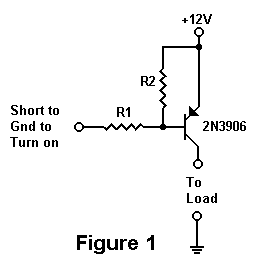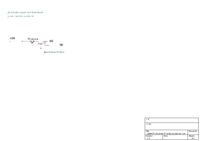expelleior
Member level 1
pnp transistor working
Forget 12V ;substitute 5V.
Using pnp transistor, if you have the collector connected to +positive 5V , then does connecting the base to ground with a suitable resistor allow current flow through the emitter and collector ?
So if the load, a LED draws 7mA and Transistor has an 100 HFE rateing then min base current = 7mA/100 HFE = o.o7mA
Base Resistor R1 = 5V /(7mA/100 * 1.3) the 1.3 is just to aqdd 30% to HFE
= 5V/ (7mA/130)
= 100 Ohms
And there is a 470 Ohmn reistor in series with the LED
Thanks for any help,
Mike.

Am I any where near close ?
Forget 12V ;substitute 5V.
Using pnp transistor, if you have the collector connected to +positive 5V , then does connecting the base to ground with a suitable resistor allow current flow through the emitter and collector ?
So if the load, a LED draws 7mA and Transistor has an 100 HFE rateing then min base current = 7mA/100 HFE = o.o7mA
Base Resistor R1 = 5V /(7mA/100 * 1.3) the 1.3 is just to aqdd 30% to HFE
= 5V/ (7mA/130)
= 100 Ohms
And there is a 470 Ohmn reistor in series with the LED
Thanks for any help,
Mike.

Am I any where near close ?
